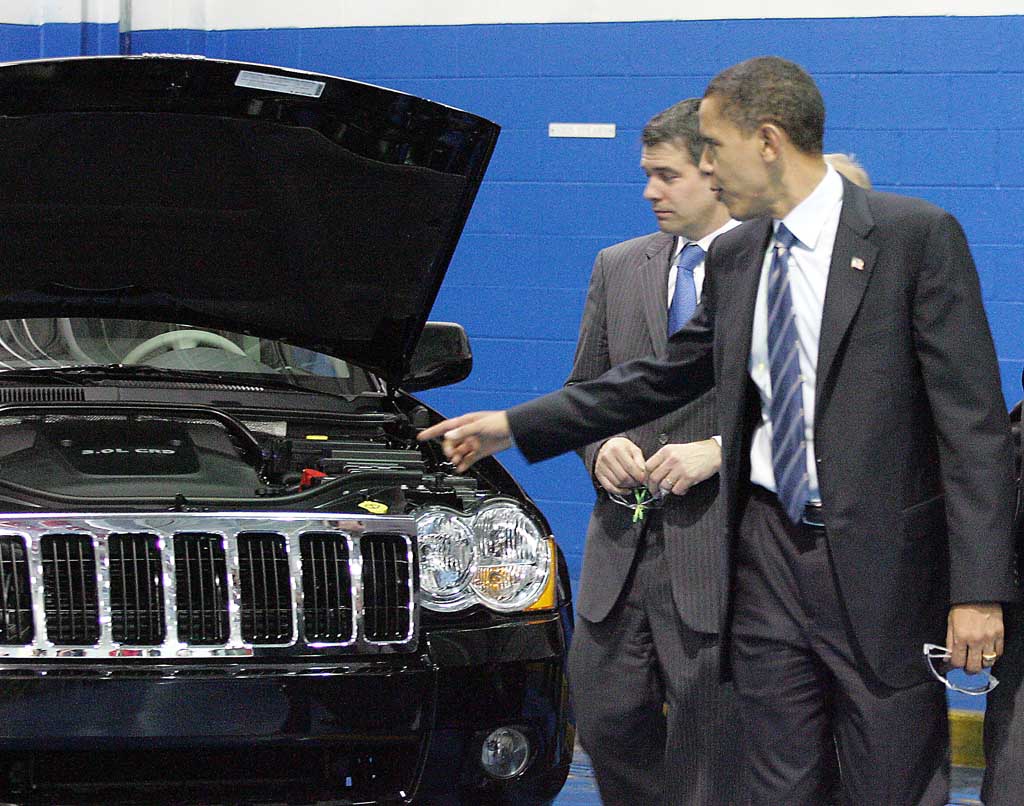When former President Bill Clinton was running for the White House, he often reminded himself that, “It’s the economy, stupid,” a message that helped him overcome the first President Bush’s bid for re-election, by appealing to an electorate facing a sharp recession.
The economy played a critical role in campaign 2008, and was arguably the single biggest reason why a virtually unknown, first-term Democratic senator was able to defeat the seasoned and well-liked Republican John McCain.
In his first visit to Detroit as a candidate, Barack Obama didn’t exactly endear himself. He made some harsh comments about Detroit’s seeming lack of direction, especially when it came to high-mileage technology. In the months leading up to the election, Obama not only softened that edgy rhetoric but became decidedly sensitive to the Big Three’s worsening situation.
Now, as he prepares to be sworn in as the nation’s 44th Commander-in-Chief, President Obama will inherit a full-fledged automotive disaster, and one that impacts imports as well as domestics, care buyers as well as car makers.
Between now and the end of March, General Motors and Chrysler will have to return to Washington repeatedly, ultimately delivering plans that can prove their long-term viability. Without a convincing case, the government could withdraw the bailout funds approved just days before Christmas. Without those loans, it seems certain that the automakers would fold up their tents. But the question is whether those loans alone will be enough, whether General Motors and Chrysler will ask for billions more – and get it.
Indeed, the reception to the proposal shown by GM, last week, was tepid, at best. Part of the problem is that the company has to make some critical assumptions about where the U.S. car market is going. And while such forecasts are always a bit uncertain, even the most confident prognosticators are today throwing their hands in the air. Will American buyers snap up 10 million vehicles in 2008 or 14 million? And what sort of vehicles will they go for? By mid-year, it seemed like the light truck market was absolutely dead, and just in need of burial. But December sales showed a surprising comeback for big pickups and SUVs, while hybrids ran out of juice.
Part of the problem is the continuing, will swing in fuel prices. As I type, Brent Sea Crude is down 6.19 percent, to roughly $34 a barrel, and with a tentative piece calming the air in the Gaza Strip, some “experts” see oil dropping to $30 or below. Only the greenest buyers are likely to go for minicars and hybrids when gas nears $1 a gallon.
“We need stability,” GM Car Czar Bob Lutz told me, during an interview. While the outspoken executive backed up, a bit, when I asked if he was calling for a stiff new gas tax, Lutz – and several other senior executives – would not cry if that happened. There’s growing support, in many circles, for some sort of a tax that would fluctuate to support minimum pricing at the pump. And that, the reasoning goes, would lead to more rational and stable decisions by consumers.
Where might that extra money goes? Certainly, there’ll be a big deficit to fill. But wary of the traditional label, plastered on Democrats of being tax-and-spend, don’t expect Obama to use a fuel tax to support a broad stimulus program. It could, however, be used more like today’s highway taxes, which keep the interstates paved and (at least occasionally, in Michigan) snow-free. In this case, the cash could fund a big infrastructure program designed to dot the nation with hundreds of thousands of new electric vehicle charging stations, for example.
Stability is something consumers want at all levels. They’d hope to know they’re less likely to lose their jobs; that their homes and financial investments will be worth something reasonably predictable; that there’ll be a loan waiting when they need it – and without having to pony up usurious interest rates. Such developments would certainly hope in the mortgage crisis, and it would likely be good news for troubled retailers at all levels. But it’s all the more critical for the auto industry.
Let’s face it: the carmakers have done a wonderful job, in recent decades, improving initial quality as well as long-term reliability. There’s a lot less reason to race out and trade in every two to four years, these days. Sure, some folks need a new car because the old one is wearing out. But as millions seem to be learning, it’s not that difficult, in uncertain times, to keep living with the old jalopy.
There are plenty of folks who like that idea. To them, there’s something awful in the planned obsolescence autos stand for. But if we’re to live in the consumer-based economy America has grown into, no manufacturing base is as critical. It may longer be true that “what’s good for GM is good for the country,” but what’s good for the industry as a whole arguably still is. Carmakers collectively create about one in seven American jobs, and dealers along generate roughly a quarter of all state and local taxes. Want to get America back to work? Want to prop up collapsing government finances? The solution is obvious. And the good news is that the healthier the auto industry, the more prosperous and confident the nation is as a whole.
That doesn’t mean going back to business, as usual. President Obama will almost certainly push for a cleaner, more fuel-efficient auto industry. And the overseers of the federal bailout package will clearly want to make sure that Chrysler and GM can become viable entities, again. Change, as Obama’s campaign mandate proclaimed, is essential, but a healthy auto industry has to be a central part of any recovery.

